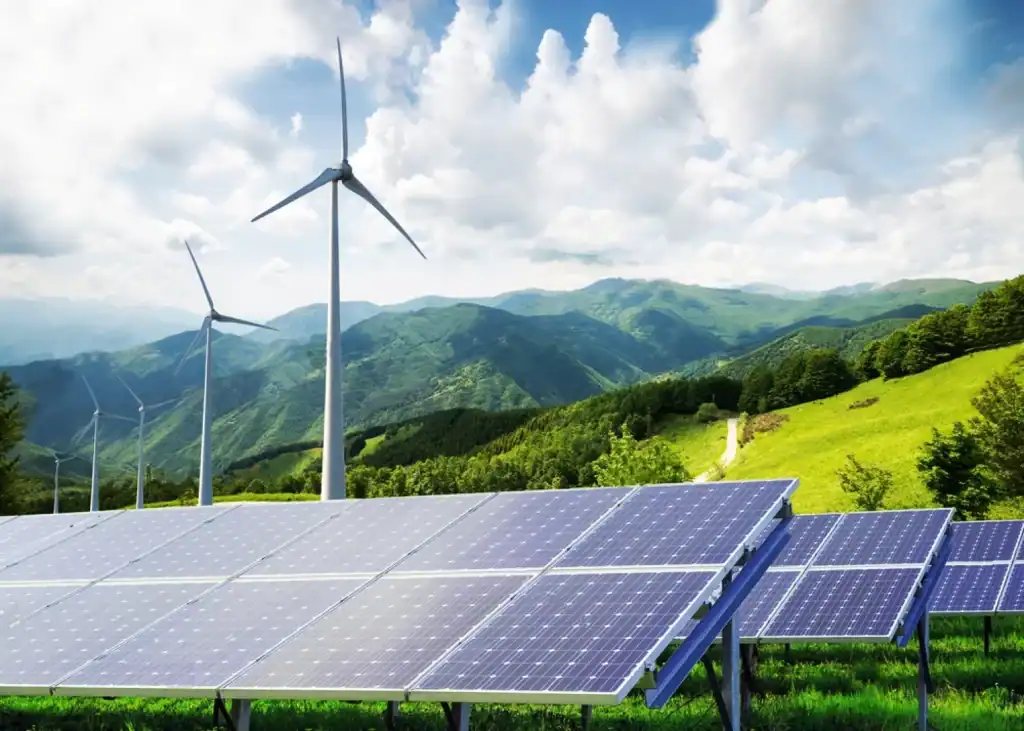In an era where environmental concerns have become deeply intertwined with economic strategy, the global energy transition is accelerating. Governments, corporations, and investors are increasingly turning their focus to renewable energy sources as a way to decarbonize economies, reduce dependency on fossil fuels, and promote long-term sustainability. This momentum has created fertile ground for a new class of real estate investments—Renewable Energy Infrastructure REITs.
Unlike traditional REITs that focus on commercial, industrial, or residential properties, renewable energy infrastructure REITs concentrate their portfolios on income-generating assets such as solar farms, wind farms, and supporting infrastructure. These REITs provide investors with an avenue to access the fast-growing renewable energy sector while enjoying the stability and tax advantages associated with real estate investment trusts.
This article delves into the structure, benefits, and market dynamics of renewable energy REITs, with a particular focus on solar and wind farm assets. It also examines global trends, regional applications in Arab markets, and the long-term viability of this investment model in the evolving energy landscape.
The Evolution of Energy-Related REITs
The concept of combining renewable energy infrastructure with the REIT framework is a relatively recent innovation. Traditionally, REITs were used to hold income-generating real estate assets such as office buildings, shopping centers, apartment complexes, and logistics warehouses. However, as infrastructure assets such as power plants, pipelines, and transmission towers began attracting institutional capital, the definition of what constitutes a “real estate asset” evolved.
In several jurisdictions, regulatory adjustments have enabled renewable energy facilities—particularly those with long-term lease or power purchase agreements—to qualify under REIT structures. This expansion of scope allows REITs to include operational solar farms, wind farms, and battery storage installations as part of their investable universe.

These renewable assets generate predictable and often inflation-linked income streams, making them ideal candidates for REIT portfolios. Their long asset lifecycles and minimal operating costs contribute to the appeal for income-focused investors seeking sustainable exposure to energy markets.
How Renewable Energy REITs Operate
Renewable energy REITs generally acquire or develop physical infrastructure associated with clean energy production. This includes photovoltaic solar arrays, wind turbines, inverters, substation buildings, control facilities, and the land beneath them. Once operational, the assets generate electricity, which is sold to utility companies or large commercial users through long-term power purchase agreements (PPAs).
The income generated from these contracts flows to the REIT, which then distributes the majority of the proceeds—typically 90% or more—to shareholders in the form of dividends. This setup allows investors to gain exposure to green energy without directly managing complex energy systems.
What distinguishes these REITs from other infrastructure funds is their strict adherence to real estate requirements. For example, rather than owning the electricity generated, a REIT might lease solar infrastructure to an operator or hold the underlying land and infrastructure, while contracting operation to a separate entity.
This distinction ensures compliance with REIT tax laws, which often limit exposure to active business income. Proper structuring allows renewable REITs to enjoy favorable tax treatment while still participating in the economic upside of clean energy expansion.
Advantages of Renewable Energy Infrastructure REITs
Renewable energy REITs offer a unique combination of financial, environmental, and strategic advantages. They appeal to a wide range of investors, including institutional funds, retail investors, and ESG-focused portfolios.
First, these REITs provide access to a rapidly growing segment of the global economy. Renewable energy has become a cornerstone of energy policy in most industrialized and emerging countries. Solar and wind power installations continue to grow at record rates, supported by falling technology costs, regulatory mandates, and strong consumer demand.
Second, the underlying assets offer stable and long-duration income. Power purchase agreements often span 15 to 25 years and are backed by investment-grade counterparties. This makes the cash flow profile of renewable energy REITs comparable to other infrastructure investments, but with added environmental benefits.
Third, these REITs are positioned as low-correlation assets. Unlike office or retail REITs that may be sensitive to macroeconomic cycles, renewable infrastructure performance is tied more closely to energy markets and environmental policy. This provides investors with diversification benefits within their broader real estate or income portfolios.
Lastly, renewable energy REITs align with the growing demand for sustainable investment vehicles. As ESG mandates shape institutional capital allocation, these REITs provide a clear, transparent, and regulated structure for investors to meet environmental goals while pursuing financial returns.
Global Investment Trends and Policy Support
Globally, renewable energy investment has surged over the last decade. Nations across Europe, Asia, and the Americas have rolled out ambitious renewable energy targets and carbon neutrality pledges. This momentum has created an unprecedented level of capital flowing into solar and wind projects.
In Europe, REITs and infrastructure funds have played a critical role in financing energy transitions. Countries like Germany, France, and the UK have introduced feed-in tariffs, tax incentives, and green bond programs that reduce risk and enhance returns for clean energy investments.
The United States has also seen rapid growth in renewable energy capacity, supported by federal tax credits, state-level renewable portfolio standards, and corporate demand for clean power. The Inflation Reduction Act (IRA), passed in 2022, significantly expanded investment tax credits and production incentives for solar and wind projects, further catalyzing REIT interest in the sector.
In Asia, China and India lead the charge in renewable energy capacity additions. Although REIT structures are less developed in these markets, infrastructure funds and sovereign wealth vehicles play similar roles in channeling capital into large-scale solar and wind developments.
Solar and Wind Farms: The Cornerstones of Renewable REITs
Solar and wind energy are the two primary asset classes in renewable REIT portfolios due to their technological maturity, scalability, and cost-effectiveness.
Solar farms involve the installation of photovoltaic panels across large tracts of land, which convert sunlight into electricity. These farms are often located in arid or semi-arid regions with high solar irradiance. They are relatively simple to build, have few moving parts, and require minimal ongoing maintenance.
Wind farms, on the other hand, consist of multiple turbines that convert wind energy into mechanical power, which is then transformed into electricity. These farms are typically located in coastal areas, open plains, or high-altitude regions with consistent wind patterns.
Both asset types benefit from long asset lives (20 to 30 years), low marginal operating costs, and scalability. They can be developed in phases and integrated with grid systems or standalone microgrids. For REITs, the revenue streams from these farms—often underpinned by long-term agreements—mirror the consistent rental income from traditional properties.
Emerging Opportunities in the Middle East and North Africa (MENA)
While the REIT model is still gaining traction in the MENA region, the potential for renewable energy infrastructure REITs is substantial. Several Arab countries have made major investments in clean energy, and regulatory frameworks are beginning to support innovative financing structures.
The United Arab Emirates has taken a leadership role with projects such as the Mohammed bin Rashid Al Maktoum Solar Park, which is among the largest in the world. Dubai and Abu Dhabi have both launched REIT-friendly environments and are exploring ways to use REITs for infrastructure development, including clean energy.
Saudi Arabia, under its Vision 2030 agenda, has committed to large-scale renewable energy expansion. Projects like the Sakaka PV Solar Plant and the Dumat Al Jandal wind farm signal the Kingdom’s intent to diversify its energy mix and attract private capital into sustainable infrastructure.
In Egypt, the Benban Solar Park demonstrates the viability of solar megaprojects in North Africa. With strong solar resources, large tracts of available land, and growing electricity demand, Egypt is well-positioned to attract REIT investment into its renewable energy sector.
Other countries such as Jordan, Morocco, and Tunisia are also implementing supportive policies and attracting international investment into solar and wind energy. If REIT structures are adopted or expanded in these jurisdictions, renewable infrastructure REITs could become a major tool for financing the region’s energy transition.
Challenges and Risk Considerations
Despite their promise, renewable energy REITs face a number of risks that require careful management.
Regulatory uncertainty remains a key concern. Changes in government policies, tax incentives, or electricity pricing mechanisms can alter project economics. Investors must assess political and regulatory risks when evaluating renewable energy REITs, especially in emerging markets.
Technical risks such as equipment failure, grid integration issues, and intermittency of power supply are also significant. While solar and wind technologies have become more reliable, they are still dependent on weather patterns and require robust operational oversight.
Environmental and land use concerns may also arise. Large-scale solar and wind projects can face opposition from communities due to visual impact, ecological disruption, or land displacement. REITs must prioritize stakeholder engagement and sustainable development practices.
Financially, renewable energy projects require significant upfront capital and have long payback periods. Effective capital structuring, disciplined cost control, and strong counterparty credit quality are essential for maintaining REIT performance.
Outlook for Renewable Energy REITs
As the world shifts toward a low-carbon future, renewable energy infrastructure REITs are expected to play a critical role in financing and operating the assets needed to support this transition.
In mature markets, we can expect further specialization within REIT offerings, with funds focusing exclusively on solar, wind, or storage assets. In developing markets, REIT frameworks may be adapted to accommodate infrastructure assets, enabling broader investor participation.
Innovations in energy storage, smart grids, and hydrogen could further expand the investable universe for renewable REITs. As technology costs decline and policy frameworks become more favorable, the lines between infrastructure, real estate, and energy investment will continue to blur.
For the Middle East, the opportunity is twofold: first, to attract international capital into renewable infrastructure through REIT vehicles; and second, to create local investment products that support national energy and diversification goals. By doing so, regional economies can build resilience, reduce emissions, and generate sustainable income for both governments and private investors.
Conclusion
Renewable energy infrastructure REITs represent a promising frontier in the convergence of clean energy and real estate investment. By channeling capital into solar and wind farms through regulated, dividend-focused structures, these REITs offer a unique blend of environmental impact, financial return, and long-term stability.
For investors, they provide a way to participate in the global energy transition without assuming the technical complexity of project development. For governments and developers, they offer an effective mechanism to mobilize private capital, meet decarbonization goals, and build resilient energy systems.
As the world moves closer to a sustainable energy future, renewable energy REITs will become not just an innovative investment option, but a necessary building block in the architecture of tomorrow’s economy.










